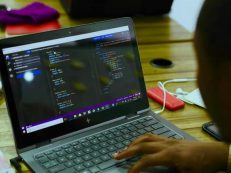Adult learners have different learning preferences, needs, and styles.
Because of this, adult educators may choose to use a variety of teaching methods. In order to cater to the diverse needs of their students. Adult learners are open-minded and receptive to new ideas and skills.
They are also driven by personal interest or need. With these characteristics in mind, it is important for adult educators to be able to select which method will be most effective. It should suitable with each group of learners they teach.
Though these are not the only ways people learn. There are many different techniques for specific types of learning preferences as follows:
Individualized Instruction
When the adult educator needs to: teach a group of learners using different teaching methods. Individualized instruction teaching styles, or teach a large group of learners but only focuses on one learner at a time.
For example, an instructor may use computer software to show pictures of various body parts. In order to explain the anatomy of the heart to several students. He or she may also use flashcards with names and definitions on them. To quiz one student while other students are busy doing something else (i.e., studying another flashcard).
Demonstration/Modeling
This method is used when the adult educator wants all his/her students to learn through observing and imitating him/her.
The adult educator demonstrates how he/she is going to do something if necessary. For example showing how he/she can properly hold a golf club before playing golf. Then ,lets his/her students imitate him/her by trying it themselves (i.e., having all his/her students try holding the golf club).
Lecture
A lecture is often thought of as being an obvious way for teachers to present information. In reality, lectures offer many benefits for both teacher and student alike:
The teacher can present more detailed information. It would normally be difficult for a learner who only has 50 minutes per week. Despite, the instructor in class during which he must learn everything he needs in order to pass the course.
During lectures, teachers can also provide details about their subject. Otherwise take hours, days, or weeks for him or her to discuss individually with each student. The teacher’s time is better spent presenting the information in order to teach all students at once.
For students, lectures allow them to take in large amounts of information. In quickly and easily way which can also help them remember it better.
In addition, lectures allow for more individualized learning. Since, teachers can easily see if any particular student is struggling. Also, if they are having difficulty understanding a concept or idea. They can then address those problems in a way that does not disrupt the flow of their lecture.
Discussion
A discussion differs from a lecture. Because, it involves more than one person—the teacher and his/her students are involved in the process as well.
The teacher leads a discussion by posing questions, presenting ideas, concepts, etc. As well as, it includes engaging with his/her students regarding those questions or ideas. Let the students engage by answering the questions posed by their instructor. Or by asking their own related questions (i.e., they may ask the instructor about specific details he/she did not mention).
Problem-Based or Case Study Learning
Problem-Based or case is suitable when there is no right answer to a problem but rather many different answers based on each individual’s perception and point-of-view.
Because there is no right answer, this type of study requires that learners be able to articulate their opinions. It requires the understandable side of thinking why other people have differing opinions as well.
It also requires that learners be able to work together as a team to come up with solutions. The problem solving resolution on all their collective experiences and knowledge sets. For example, they should connect what they know from everyday life with what they are learning in school
Problem-Solving
This method is similar to problem-based learning but instead involves solving real world problems. Rather than making up fictitious ones designed specifically for educational purposes (i.e., solving math word problems vs. analyzing case studies).
Problem solving often requires much more creativity than just finding one correct answer to something; problem solvers need to think creatively about how best to solve an issue while keeping in mind things like societal norms, laws, common sense, etc..
Problem-solving skills are often directly applicable outside of school so these types of classes typically involve much more active participation than traditional classes do:
They require students to work collaboratively together towards a common goal rather than passively listening to someone else talk about something that only has academic value without any real world application
(i.e., people who design video games must use this type of thinking since there is rarely ever one way through a level—players must think critically about which way will best get them past obstacles without dying).
Project-Based Learning
This method applies when the adult educator wants his or her students to be able to apply what they are learning in a real world setting. Rather than simply presenting information, the teacher gives his or her students a task to complete and allows them to use the knowledge.
They learned as well as their creativity and critical thinking skills in order to complete that task (i.e., students may be required to conduct research on an issue in their community then present it at a city council meeting).
Simulation/Role Play
Using simulation or role play method when the adult educator wants his or her students to learn about a particular subject matter. By immersing themselves into a situation where they must think, feel, and behave like someone else (i.e., acting like someone who is going through bankruptcy) so that they can better understand how others handle situations similar to that.
Field Trips
This method is used when the adult educator wants his or her students to learn about a certain subject matter. By taking them to a location where they can see first-hand what they are learning about. (i.e., having students visit a wildlife preserve in order to learn more about animal habitats).
Simulation/Role Play/ Field Trips
This combination of methods is used when the adult educator wants his or her students to learn about a certain subject matter. By immersing themselves into a situation where they must think, feel, and behave like someone else, take them to a location where they can see first-hand what they are learning about.
Then have them apply that knowledge in real world situations (i.e., acting like someone who is going through bankruptcy while visiting an attorney’s office, then returning home and discussing with their spouse how it felt being in that situation).
Cudy is a platform for tutoring the students from any grades. Cudy is presented as a platform for online class learning with effective tutoring. The tutoring features is extremely convenient to use and can be accessed at any time and from any place.






